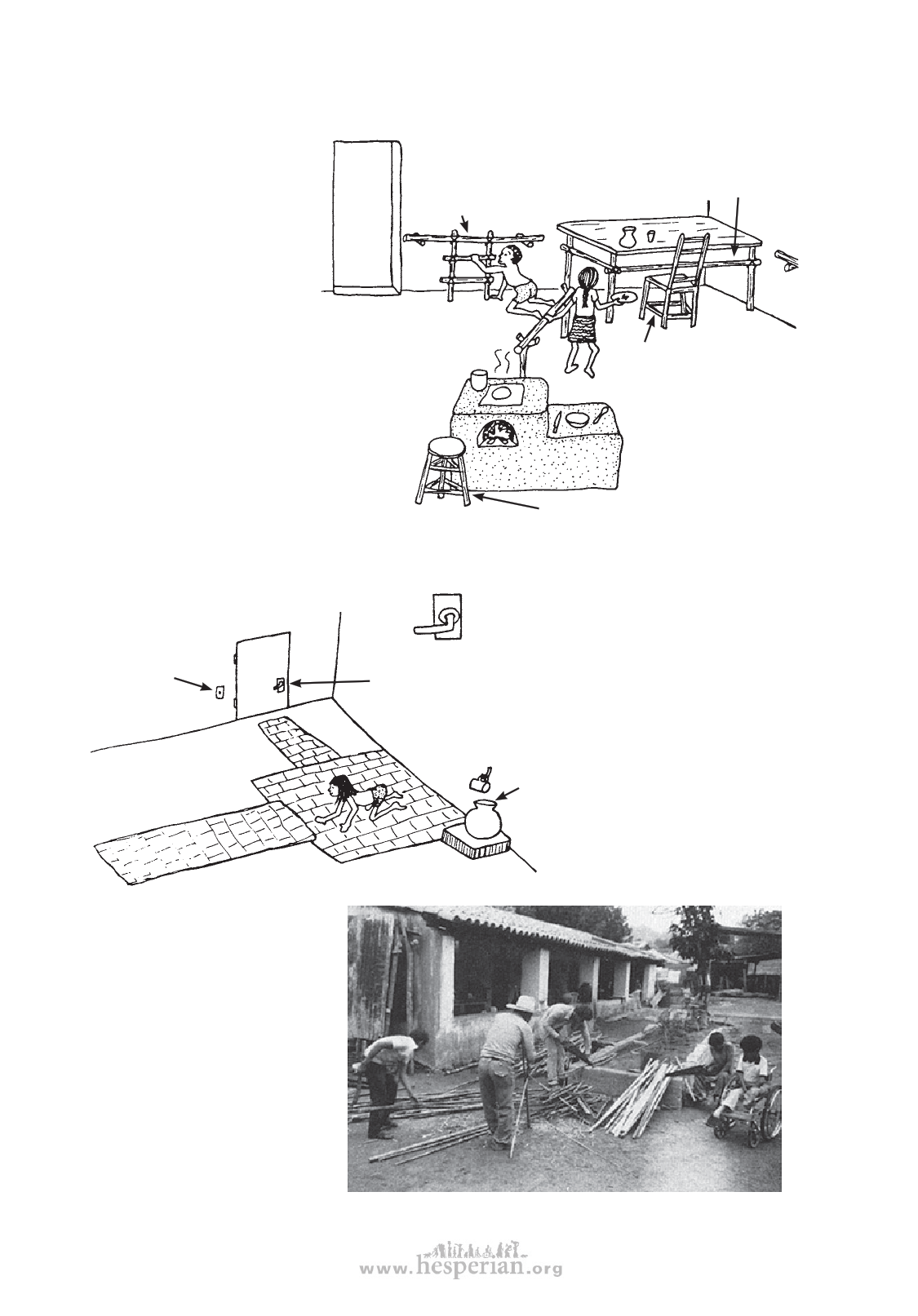
486 CHAPTER 51
Adaptations for the child who is learning to walk and balance
HAND RAILS
These can be fixed to
the walls and furniture.
If necessary, pathways with
rails can be put up so that
the child can walk with
support almost anywhere in
the house, and also outside
to the latrine (toilet) or
garden (see p. 507).
Before attaching hand
rails firmly, test the child
with a temporary rail at
different heights to find out
what works best As the child
grows, you may need to
place the rails higher. Or
you may want to remove rails
little by little to help the child
improve her balance and walk
more independently.
MATS
low light
switch
Hand rails of different
height form a ‘ladder’
on which the child can
pull to standing.
pole to help
child stand
up at table
Where floors are
of dirt, hand rails
can be mounted on
upright poles.
chair with
crossbars for child
to climb up on
high stool with climb-up
poles for kitchen work
Easy-to-turn
door handle for
child with poor
hand control.
Door handle at low height
for crawling child (or high
if you do not want her to
go out alone).
For the child
who only rolls or
crawls, some kind
of straw mat or
rug will help protect
her knees and skin,
and will help her stay
cleaner (if floors are
of dirt).
Water jug and cup
near floor for
older child who
can only crawl.
The ‘model home’ in PROJIMO
is a guesthouse. It has features
that make it easier to care for a
disabled person, or for a disabled
person to care for herself and do
housework. Visiting families can
find out what is useful for their
child and can adapt their own
home. Here PROJIMO workers
split wild cane to make screens to
keep out the animals.
Disabled village Children